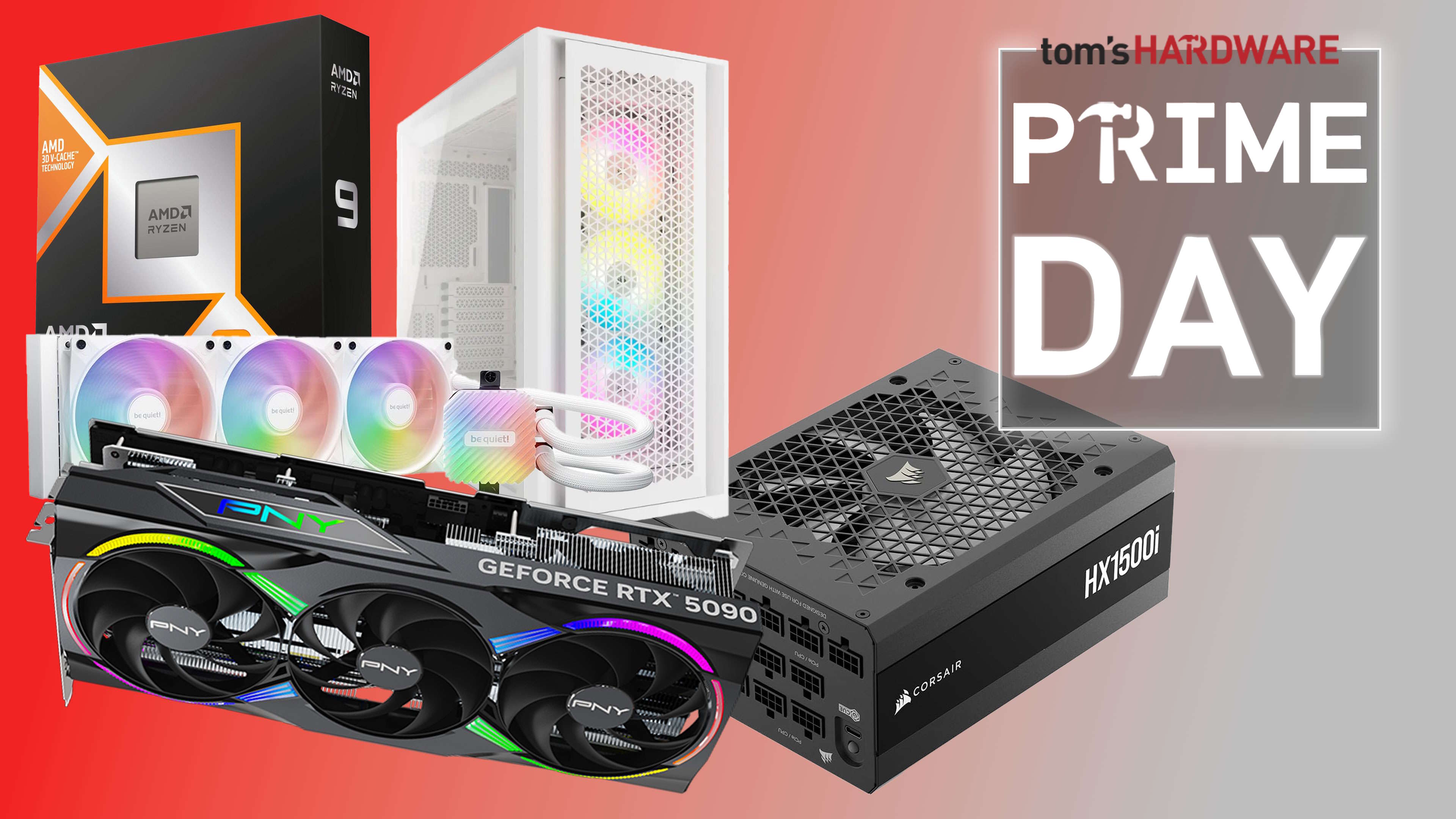Earlier this month, Samsung unveiled its new TV lineup, featuring new Micro LED, Mini LED, OLED, and QLED TVs, at the CES 2024 expo in the USA. These TVs feature improved picture quality, a new version of Tizen, and improved SmartThings. Now, the company is bringing over those improvements to its commercial display lineup, which consists of displays and TVs that you usually see in digital classrooms, retail stores, outdoor advertising, and other commercial outlets.
Samsung’s commercial displays and TVs for 2024 run Tizen OS 7.0 and feature SmartThings connectivity
Samsung has started showcasing its new commercial displays and TVs at Europe’s largest display exhibition, ISE (Integrated Systems Europe) 2024. This expo is being held at Fira Barcelona in Barcelona, Spain, from January 30 to February 2. Samsung’s booth at this expo is spread across 1,728 square meters of area. At its booth, Samsung is displaying commercial displays with SmartThings, the 2024 version of its Electronics Whiteboard display for classrooms and meeting rooms, a 105-inch Smart Signage display optimized for meeting rooms, and a transparent Micro LED screen. The transparent Micro LED concept is the same that the company showcased at CES 2024.
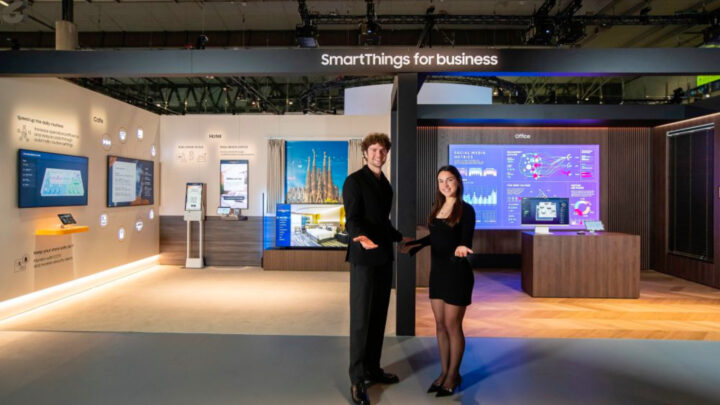
All these displays feature SmartThings and the Tizen 7.0 operating system. With SmartThings also comes compatibility with HCA (Home Connectivity Alliance) and Matter platforms for controlling and managing smart home devices. The South Korean firm has expanded SmartThings to the B2B (business-to-business) market. Samsung is strengthening its commercial display lineup by improving its hyper-connectivity-based platform that makes it easier to link and manage various screens, smart devices, solutions, and services. These displays are also designed to be used in hotels.
It is possible to create automation based on several factors on these screens. In smart stores, these TVs can be used to easily change or manage the lighting and menu boards based on several factors or the time of the day. CCTV cameras can be connected to these displays to keep a check on the security of the store or nearby locations. In a meeting room, the AC and lighting can be set to a preferred condition when meetings are taking place. With SmartThings AI Energy Saving mode, energy consumption can be reduced by turning off the screens or other connected devices at a particular time.
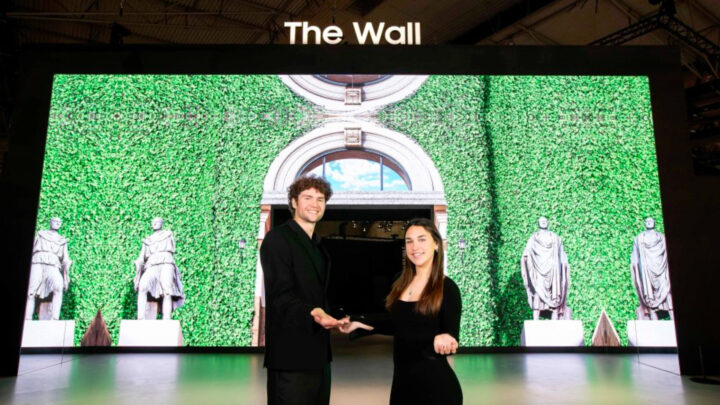
Samsung has also released the SmartThings Enterprise API, which can be used to make these commercial displays work better with an enterprise’s internal data. For example, a custom dashboard can be easily created to showcase relevant data for the company’s employees.
Samsung’s Digital Whiteboard (WAD) screens for classrooms and meeting rooms run Android 13
The company showcased the 65-inch, 75-inch, and 86-inch versions of its Electronic Whiteboard (WAD) display, and they have Google’s EDLA (Enterprise Devices Licensing Agreement) certification. These TVs run Android 13 instead of Tizen 7.0, and they can be used in classrooms. Classrooms can easily use Google Classroom, Google Drive, or any other educational app from the Play Store.
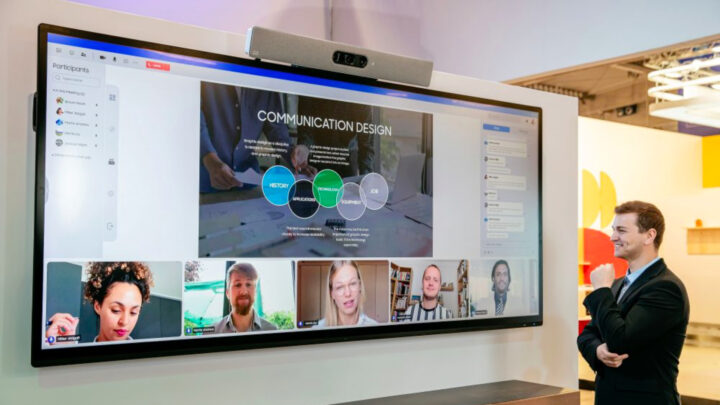
At the entry of the exhibition hall, Samsung has set up a giant 420-inch version of The Wall TV, and it displays anamorphic content based on 3D stereoscopic effects that provide a sense of immersion. This is the first instance of a company integrating smart home connectivity into commercial displays. The 105-inch Smart Signage display (QPD-5K) that Samsung showcased at the expo has a 21:9 ultrawide aspect ratio and a high-resolution camera. It supports multi-window setups and is compatible with Cisco Room OS, Cisco Room Kit, Cisco Room Kit EQ, and Microsoft Teams.
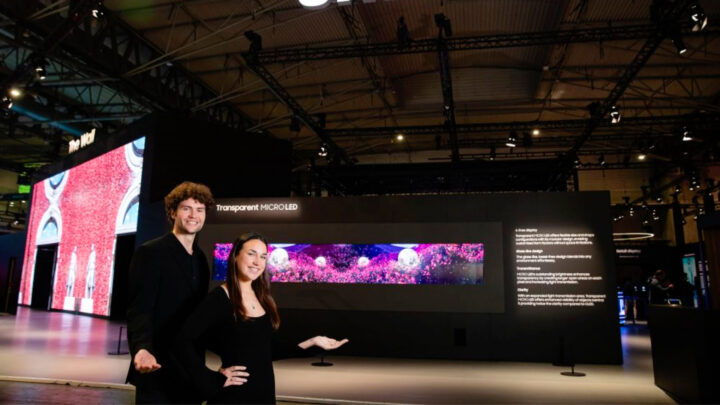
Samsung Visual Display President Yong Seok-woo said, “Customer experience innovation through hyper-connectivity and AI is currently the most important topic in the commercial display market. We will strive to provide a new level of experience.”

